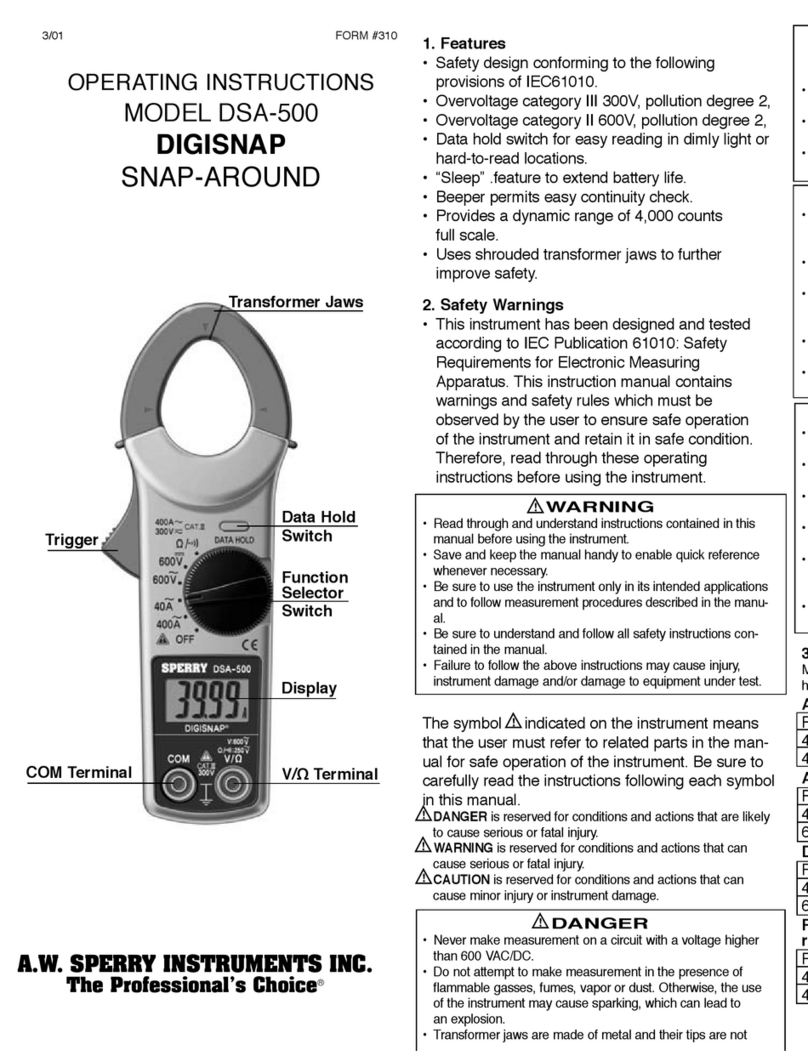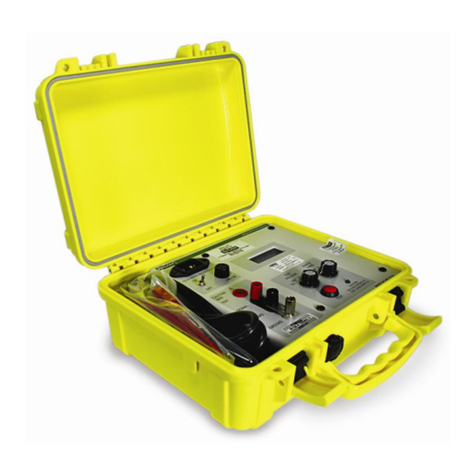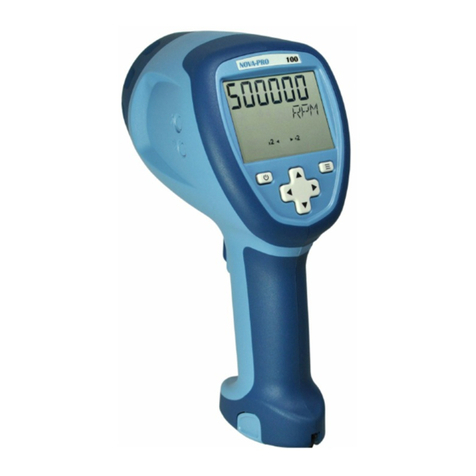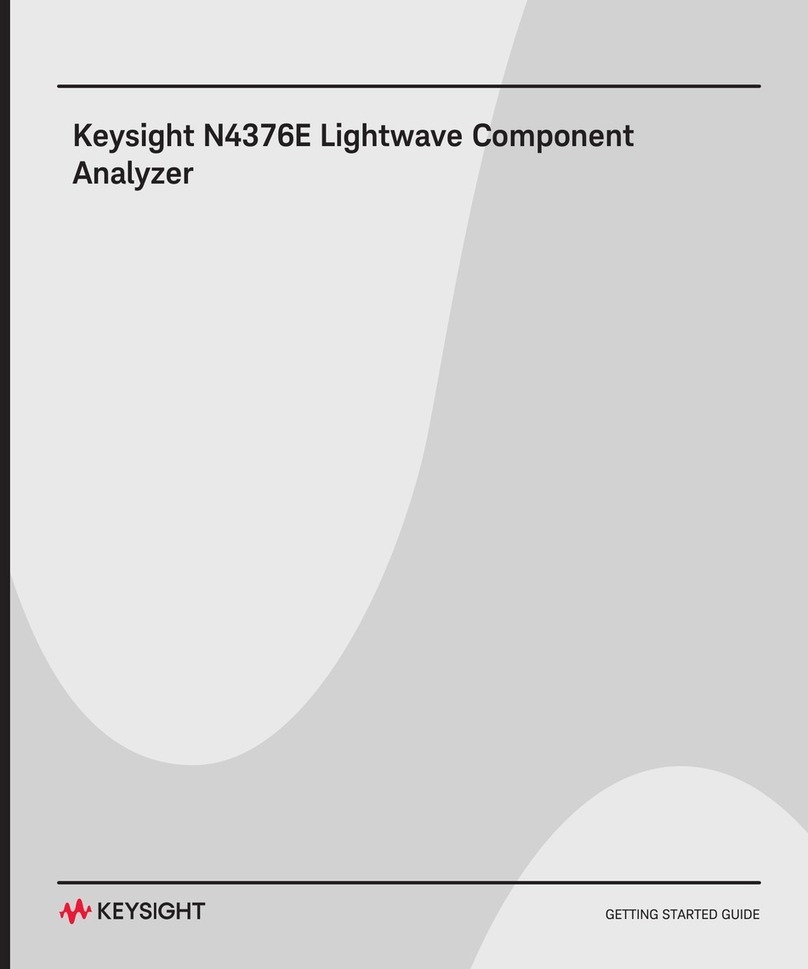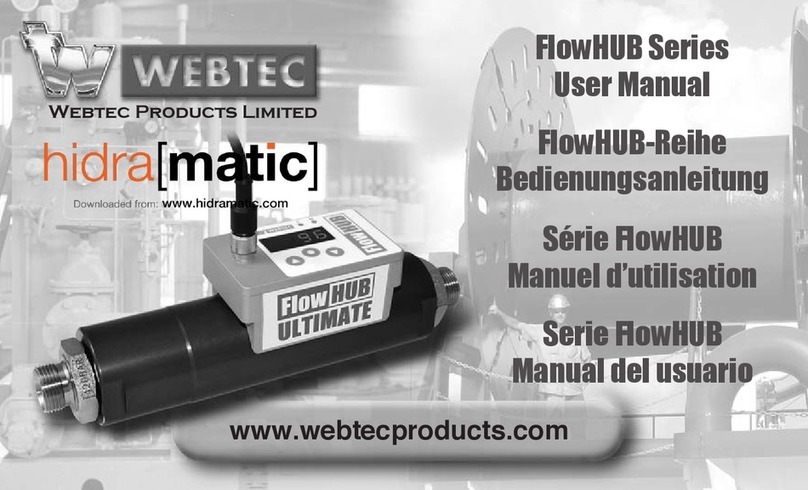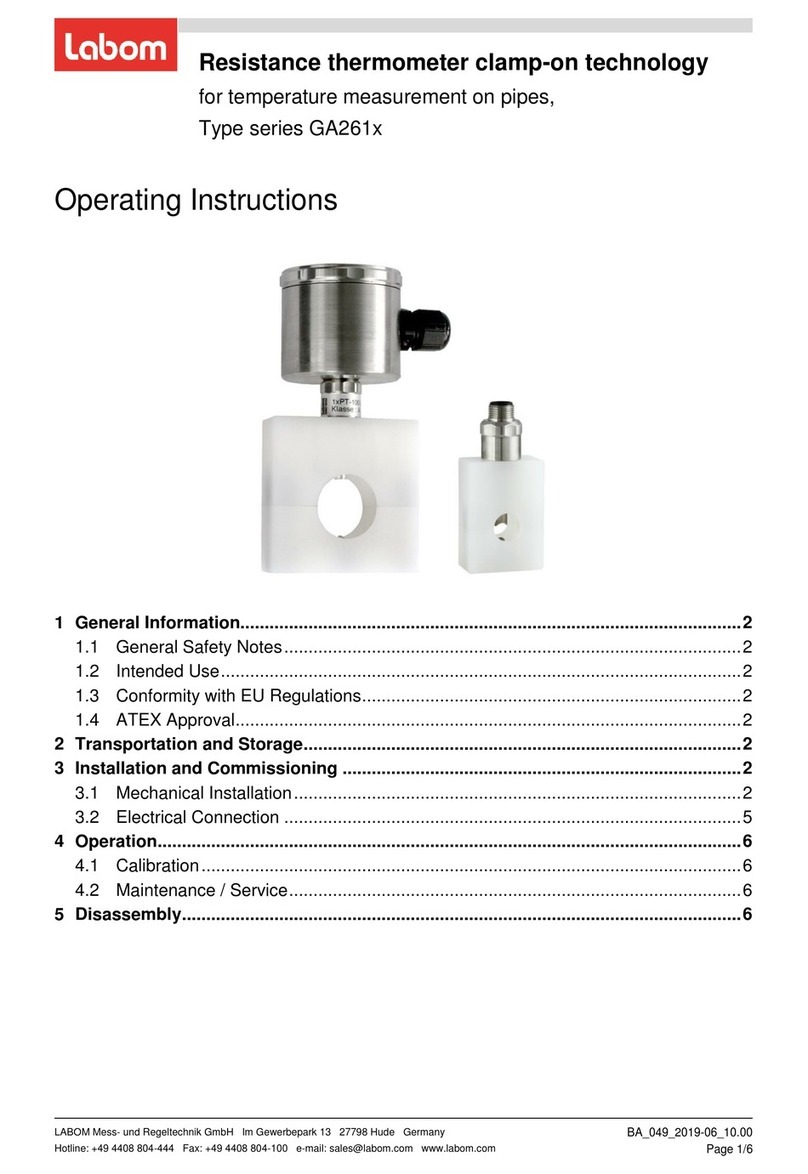Procare MicroFET 2 User manual

Measuring equipment for professionals
Handleiding
MicroFET 2
Manual
MicroFET 2

www.procarebv.nl/sp
Introduction -
1
Contents
1
Introduction ..........................................................................................2
2
Testing Method.....................................................................................3
3
Reproducibility .....................................................................................4
4
MicroFET2 Features .............................................................................5
5
Units of measurement..........................................................................7
6
Batteries ................................................................................................8
7
Maintenance..........................................................................................9
8
Calibration...........................................................................................10
9
Service.................................................................................................11
10
Specifications .....................................................................................12
11
MicroFET2 Accessories .....................................................................13
12
Norm values........................................................................................14
13
Declaration of Conformity .................................................................15

www.procarebv.nl/sp
Introduction -
2
1
Introduction
The microFET2 is a portable ‘Force Evaluation and Testing’
system, designed by Hoggan Health Industries Inc., USA and
marketed by ProCare B.V.
The microFET2 fits in the palm of your hand. The sophisticated
strain gauge elements located within the transducer react
independently to measure external forces that are applied to
the transducer. This enables the system to account for very
subtle variations in force applied independent of the
direction of that force. A microprocessor converts the signals
from the strain gauges into digital signals. The processor
samples the data from each
gauge repeatedly during a test, selecting the proper signals
to insure validity of the data.
The microFET2 provides you with objective, quantifiable data
by using the overall accepted and often used technique of
manual muscle testing. (Further literature about manual muscle
testing: 'Muscle Testing Techniques of Manual Examination' by
Daniel & Worthingham, 'Muscles Testing and Function' by
Kendall & McCreary).
The microFET2 can also be connected wireless to a computer.
With the help of optional available software called ‘MicroFET
software’, it is possible to view tests in real-time on the
PC. When the hand-held dynamometer is used in this way, you
can get maximum results out of the use of it. The CompuFET
software delivers extensive possibilities to analyse and
report all recorded data. On your request, we are pleased to
provide you with the CompuFET software Demo CD-ROM.
The microFET2 aids in the differential diagnosis, prognosis
and treatment protocols for neuromuscular and musculoskeletal
disorders of virtually every muscle or muscle group. The
technique of testing is suitable for any small practice
because it requires relatively little extra time or space.

www.procarebv.nl/sp
Testing Method -
3
2
Testing Method
For reliable testing of muscles with the microFET2 one should
have adequate knowledge of human anatomy and muscle function
(agonist/antagonist, joint movement and compensation by other
muscles). This knowledge is necessary to isolate the muscle or
muscle group that has to be tested and to stabilize the
subject by giving resistance to any unwanted movements of the
subject’s body.
One of the methods to get reliable test results with the
microFET2 is 'patient-initiated break testing':
Choose the proper position for the patient to test a
specific muscle (group) and keep the joints involved in a
fixed angle during muscle contraction
Have the patient gradually apply maximum force against the
transducer pad of the microFET2.
Apply little extra force on the patient until movement
starts to occur (the clinician ‘breaks’ trough the
patient’s resistance)
Another method is ‘patient-initiated make testing’. The
patient applies maximum force against a more or less constant
resistance (the clinician).
It is also possible to use the method of 'doctor-initiated
testing'. The patient has to resist a movement initiated
through force applied by the clinician until the patient is
able to stop the movement (‘lock’).
Both methods 'make-testing' and 'lock-testing' show larger
variance in test results than ‘break-testing’.
QUESTION:
HOW STRONG MUST THE TESTING PERSON BE TO OVERCOME THE
SUBJECT’S MUSCLE STRENGTH?
The purpose of this type of testing is to identify weakness.
An isolated muscle that cannot be overcome by a clinician
shows a significant amount of strength.
Compare the method of ‘break testing’ with lifting a heavy
load (the subject’s resistance) with a lever (place of
transducer on target limb). In the majority of manual muscle
tests if the target muscle is isolated and the clinician is in
a leverage position, the subject’s maximum muscle force should
be overcome.

www.procarebv.nl/sp
Reproducibility -
4
3
Reproducibility
It is virtually impossible for a subject to apply for instance
50% of maximum muscle force. The only force that is
reproducible is maximum force.
To ensure the reproducibility of the force- measurement, all
factors that have influence on the measurement must be kept
constant.
Factors that are of influence can be within the subject, the
researcher, in the protocol or in the testing environment.
Some of the factors are difficult to standardize while others
are difficult to control.
Factors of influence are:
Subject’s body weight, starting position, stabilisation,
motivation, learning effect, fatigue and training ability.
Researcher’s position of fixating arm and hand,
instructions to the patient, reading of the
Instrumentation.
Instrumentation type, place of application on subject’s
body, comfort during contact with subject’s body, ability
to determine effective line of force, reliability
Protocol type of muscle contraction (isometric,
isokinetic, concentric or eccentric), direction of force,
number of repetitions, (sub) maximal etc.
Environment temperature, audio-visual feedback.
With the microFET2 in mind with a ‘break-testing’ protocol,
standardization is possible for:
Starting position of subject and researcher,
stabilisation, point of application of transducer and
instructions to the subject.
Always try to keep the subject’s motivation high
(encourage the subject to perform well) and make sure that
the environmental factors are kept at a constant level.
These way reliable and reproducible recordings will be
possible with the microFET2.

www.procarebv.nl/sp
MicroFET2 Features -
5
4
MicroFET2 Features
The digital read-out of the microFET2 is shown in two Liquid
Crystal Displays (LCD's). There are two displays:
PEAK FORCE:
real-time read-out of force during testing
the maximum force applied during the test (peak force) is
displayed after testing when the applied force is released
DURATION/Secs:
the duration of the test is shown in seconds.
on the left of this display a 'H' (high) or a 'L' (low) is
shown. Look under THRESHOLD.
Next to the two displays there are two buttons and a switch
with the functions:
THRESHOLD = red button
RESET = orange button
ON/OFF = red switch
THRESHOLD:
This sets a High (H) or Low (L) threshold for the minimal
force to start the test with.
Low Threshold recording of test data begins at 3,6 N.
High Threshold recording of test data begins at 13 N.
The default setting of the microFET2 is at High Threshold.
RESET:
by pressing the RESET button both PEAK FORCE and DURATION
windows are set at zero and the until is reinitialized.
RESET will not change the Threshold setting.
ON/OFF
The unit should always be turned off by sliding the power
switch when not in use.

www.procarebv.nl/sp
MicroFET2 Features -
6
Figure 1: microFET2 Features
a. Duration display
b. Peak Force display
c. Transducer pad
d. Threshold button
e. ON/OFF switch
f. Reset button

www.procarebv.nl/sp
Units of measurement -
7
5
Units of measurement
With the microFET2, the measurement results can be presented
in different units:
- lbs.
- newtons
- Kgf.
The desired unit of measurement can be selected prior to the
measurement; Hold down the ‘threshold’-button for 5 seconds. A
dash will appear behind the current unit setting in the ‘peak
force’-display. It is now possible to switch between the
different units by shortly pressing the ‘threshold’-button.
After the desired unit of measurement has been selected, press
the ‘reset’-button to confirm.
Attention: It is not possible to change the measurement units
after conduction of that measurement! So make sure to select
the correct unit of measurement before doing the measurement.

www.procarebv.nl/sp
Batteries -
8
6
Batteries
The microFET2 uses two 1/2 AA 3.6 Volt Lithium rechargeable
batteries. When the batteries are getting low both displays
will show ‘LO’.
To replace the batteries unscrew the testing pad. Now you see
the batteries. Carefully remove them and put in new ones.
Battery Saver: microFET2 has a self-activating ‘sleep’ mode to
extend battery life when the unit is accidentally left on. The
‘sleep’ mode starts when the power switch is turned on but the
unit has not received any input for three minutes.
There are two ways to wake the microFET2 from it’s sleep mode:
1. Press the RESET button
2. Switch off the unit for five minutes or more and put it
back on again
Batteries can be ordered through your local supplier or
www.procarebv.nl/sp. Article code: 99.LS1425.

www.procarebv.nl/sp
Maintenance -
9
7
Maintenance
The microFET2 is designed and build for years of reliable
recording. Like any other precision instrument the microFET2
also requires cautious handling. Dropping the unit or hitting
the transducer can cause serious damage.
The microFET2 is not water resistant. Cleaning should take
place by wiping the surface with a soft damp cloth using a
mild cleaner when necessary.

www.procarebv.nl/sp
Calibration -
10
8
Calibration
We advise calibration of your microFET2 every year. This will
guarantee that the microFET2 will always give you correct
measuring data. ProCare is certified to perform the
calibration. The calibration includes a detailed calibration
report.
Please contact ProCare for more information.

www.procarebv.nl/sp
Service -
11
9
Service
When you are experiencing problems with your microFET2, please
contact your supplier:
ProCare B.V.
Zernikepark 16a
9747 AN Groningen
The Netherlands
T +31 505715074
F: +31 505716746
E info@procarebv.nl
I www.procarebv.nl/sp
Fill in the serial number of your microFET2 below.
MFT2

www.procarebv.nl/sp
Specifications -
12
10
Specifications
Weight: 0,45 kg
Power Source: 2x ½AA 3.6Volt Lithium batteries
Temperature Range: 5 - 45 sec
Humidity Range: 10 - 40 %
Test Range: 3,6 - 1320 N
ATTENTION
Do not exceed 1320 Newton of force. This can influence the
accuracy of the transducer!

www.procarebv.nl/sp
MicroFET2 Accessories -
13
11
MicroFET2 Accessories
Your microFET2 comes with the following items:
microFET2 unit including batteries
Charger
Wireless USB receiver
Flat transducer pad
Extra large transducer pad (9,4 x 3,8 cm)
Small transducer (digit testing) pad
Rechargeable batteries
Demo CD
Muscle Testing Position Chart (behind the foam in the lid)
Optional:
Algometry attachment (surface 1 cm²)
Software: With the optional microFET software it is
possible to view tests in real time on the PC. The
microFET software produces extensive possibilities to
analyse and report all recorded data.

www.procarebv.nl/sp
Norm values -
14
12
Norm values
We have at our disposal norm values for the MicroFET 2.
These values are included in our software. You can ask our
sales department for an online form which automatically
calculates these norm values. Please contact them through
info@procarebv.nl or +31 505715074.

www.procarebv.nl/sp
Declaration of Conformity -
15
13
Declaration of Conformity
----- DECLARATION OF CONFORMITY -----
Company: Biometrics Motion BV, Bolderweg 26, 1332 AV, Almere,
The Netherlands
Declares that:
Product: microFET
Model: microFET2
Class: Medical Devices, class 1
-
Conforms to essential requirements as described in Annex 1
of the Directive of Medical 93/42/EEC dated 14 June 1993.
-
Is supplied with the required documentation as described
in Annex 1 of the Directive of Medical 93/42/EEC dated 14
June 1993.
-
Complies to the harmonised European norms:
Emission: EN55022 Radiated, Class A
Immunity: EN5082-1 IEC 801-2 Electrostatic
Discharge Criteria A in a level 1 environment
according to the regulations for electromagnetic compatibility
(89/336/EEG, amended by 91/263/EEG, 92/31/EEG en 93/68/EEG).
The Netherlands, Almere, 4 January 2014
Msc. T. Hilgeholt
(Product Specialist)

www.
biom
etri
csmo
tion
.com
Declarat
ion of
Conformi
ty -
16

ProCare B.V.
A Lode Holding Company
Zernikepark 16a
9747 AN Groningen
T 0031 50 5715074
F 0031 50 5716746
www.procarebv.nl
@ProCare
Measuring equipment for professionals
Table of contents
Popular Measuring Instrument manuals by other brands
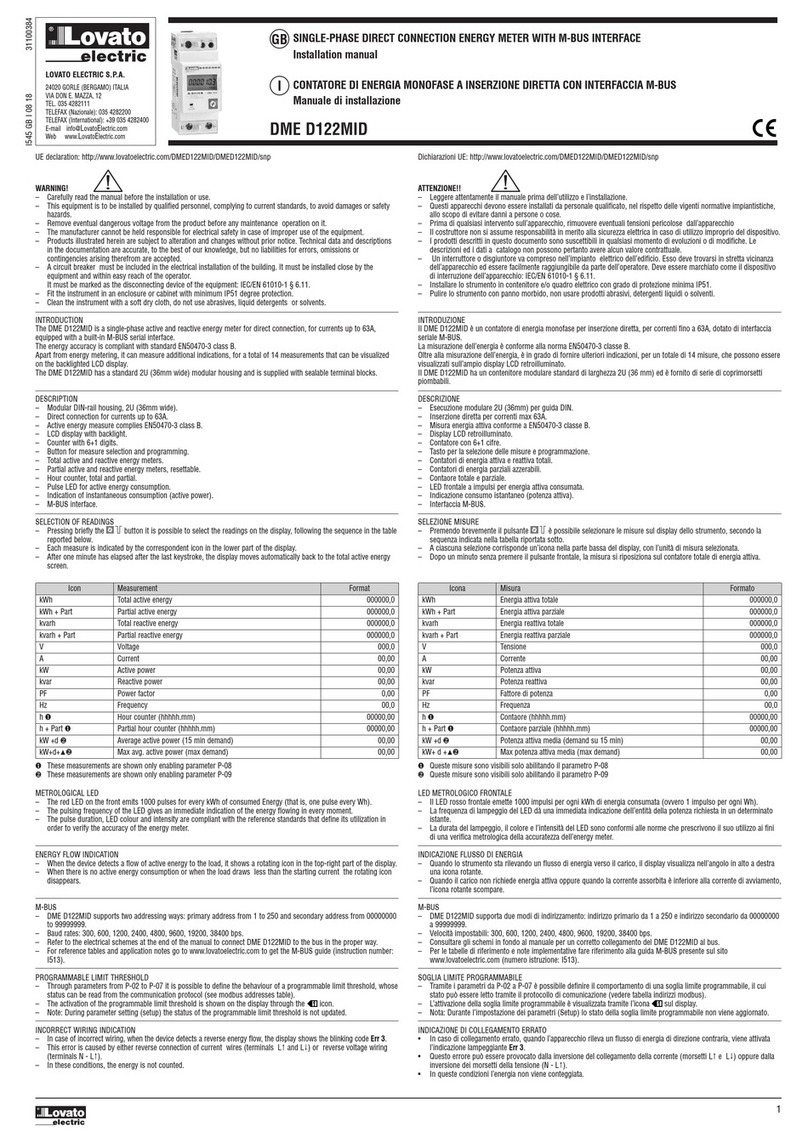
Lovato
Lovato DME D122MID installation manual

HP
HP 5061B Operating and service manual

DEGREE CONTROLS
DEGREE CONTROLS ROOSTER PRESSURE 100 user manual

Amprobe
Amprobe UAT-600 Series quick start guide
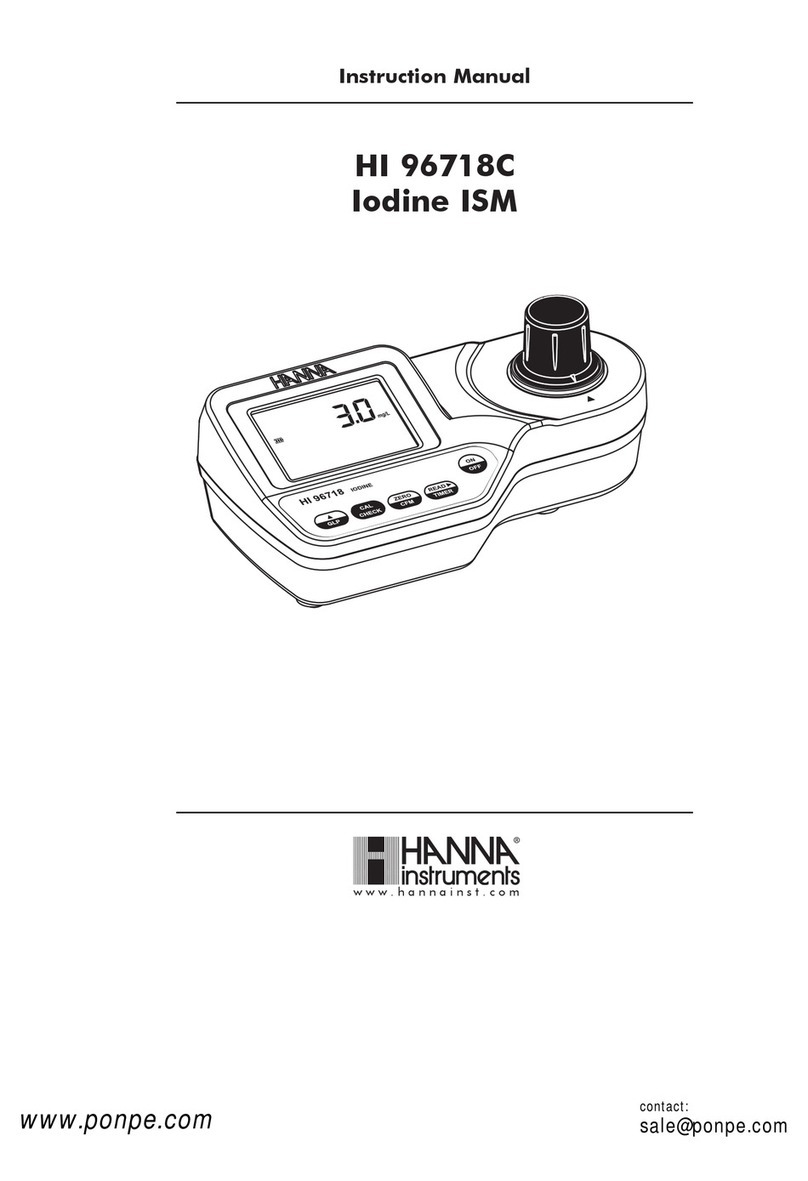
Hanna Instruments
Hanna Instruments HI96718C instruction manual
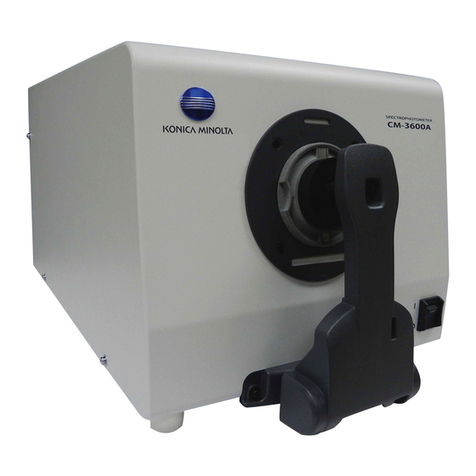
Konica Minolta
Konica Minolta CM-3600D brochure



